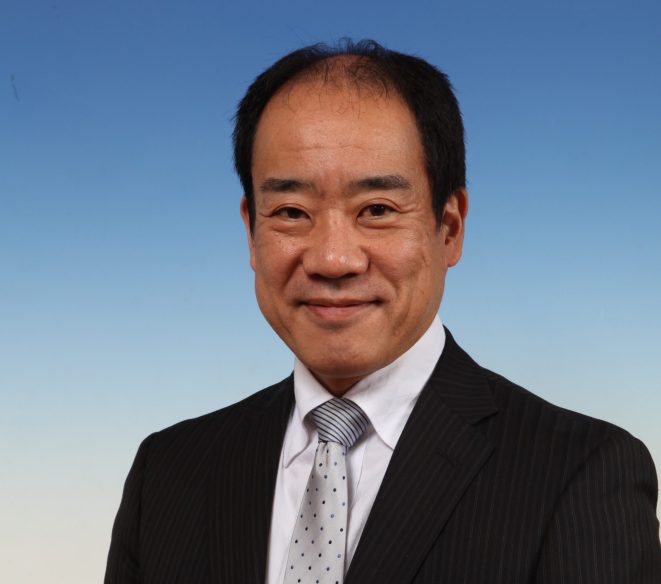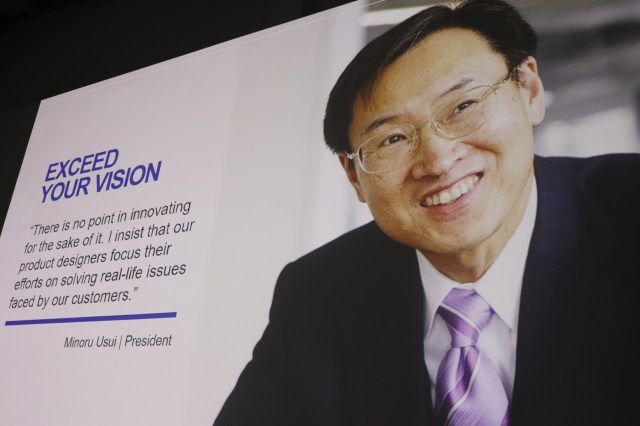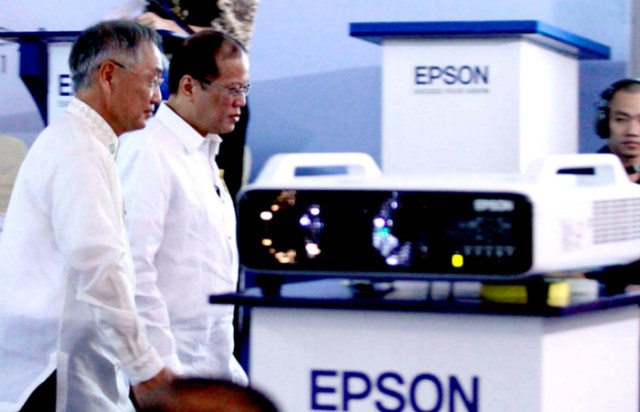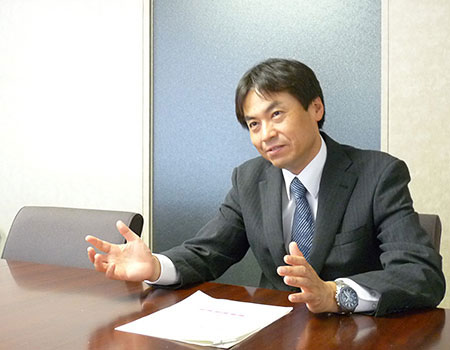
Epson global president Yasunori Ogawa has responded to questions from Australian trade media about where the company’s focus is currently sitting.
The Q&A coincided with a launch in Sydney of Epson’s latest product offerings which include its first ever UV flatbed printer and a 76-inch dye-sublimation press that takes on latex with a resin inkset, promising durability and vibrancy.
Ogawa answered questions remotely as Epson was unable to host industry members from Australia at its research and development hub in Nagano in Japan this year due to COVID-19.
Q: How important is the A/NZ market to the Epson business and what is your message to your existing and potential customers in this region?
Ogawa: The A/NZ market and indeed the Oceania market is incredibly important to Epson. They are both advanced and sophisticated which makes both Australia and New Zealand ideal for helping us understand what customers want from our products and getting feedback on how we can improve them.
Our customers in Oceania are always very vocal about expressing their opinions to us. For us, it’s all about working with our customers to solve real issues faced by the industry. So, although these direct opinions are not always what we want to hear, my big request is that they keep on telling us exactly what they think about how we can keep on improving and better work together.
This makes us as a company and our products better.
Q: The growth of labels and packaging is undeniable, what is Epson doing to capitalise on this trend? Is it a key focus for Epson in future?
Ogawa: Yes, we believe there’s a lot of scope for expanding digital technologies in signage, textile and label printing. In fact, we think these are hugely important for our future growth in industrial and commercial printing. As a result, we are making major inroads and advances in these areas.
In label printing we’re aiming to replace traditional analogue processes by introducing high performance models that will greatly increase productivity.
Q: What developments can we expect to see with Epson PrecisionCore printheads?
Ogawa: Our PrecisionCore printheads allow us to fire precise amounts of ink, and because they don’t use heat, are extremely durable and can be used with a wide variety of inks. Going forward, we’d like to take advantage of this versatility. Through open innovation, we’d like to expand applications for our technology in areas like manufacturing and regenerative medicine by printing with substances such as metals and human cells.
Q: Which areas of large format printing (signage, textiles and display) is Epson seeing growth in – Eco-Solvent, UV, DTG?
Ogawa: In LFP, Epson ‘s highest market share is in photos and proofing, while in textiles, we are strongest in DTG. With the market feedback we are getting, I expect label, textiles and signage printing to all experience significant growth going forward.
In signage we aim to dramatically expand applications by launching new products with resin and UV inks. We’ll also seek to expand applications by increasing convenience through measures such as providing cloud solutions with functions to help monitor operations.
Q: What are the main trends that Epson is seeing in the packaging/label printing market? What is Epson doing to respond to these trends?
Ogawa: I think we will see a lot of new applications in packaging and label printing, with particular emphasis on small lot, high-performance and fast-turnaround jobs. We’re not here to simply sell products. We want to lead the shift towards digital by offering solutions that facilitate efficient print management.
Q: Epson is becoming a stronger player in textile printing with engines from desktop dye-sublimation up to industrial-level direct to substrate printers. Your takeover of Fratelli Robustelli and For.Tex has taken Epson to a different level.
Where do you see Epson concentrating its development most; on the industrial level i.e. with the products developed by Fratelli Robustelli and For.Tex, or in the smaller, more conventional Epson market using SureColor machines? Which is the most valuable market for Epson in textiles?
Ogawa: The short answer is both. In textile printing, we’ve already seen the digitisation of products for small lot production of items with high quality and advanced functionality. Now we are introducing some high-performance printers, we envisage taking lead in digitisation for printing medium- and large lots of general apparel.
We’ve spent the last few years developing platforms that will enable us to rapidly launch a wide range of products from small- to high-end models, and which are designed focused on customers’ applications.
Again, we are concentrating our R & D in equal measures in both industrial and smaller more conventional solutions, both of which are growing in size and scope.
Q: Epson produces printers for sign and display printing, label printing and direct to garment printing. How do you think the Covid-19 crisis will impact on those markets, and what are the positives there?
Ogawa: COVID-19 is impacting almost every market by making workflows more challenging and thus requiring clever, efficient and innovative solutions to overcome those challenges.
We are seeing big demand in these markets in both developed and developing economies, and we still think there’s a lot of room for growth. I expect increased demand for LFPs because a lot of firms will look to disperse their operations to help reduce overall risk. Epson tries wherever possible to help our customers overcome challenges associated with COVID by offering not just hardware, but software solutions to allow efficient management of distributed printing operations.
Q: What can a company the size of Epson offer printers in terms of IT and other support as they work their way out of COVID-19?
Ogawa: Epson has been supporting the printing industry for many years and we will continue to support the industry along with our customers at a grassroots level by way of innovative printing solutions that are fully supported by our global network of trained engineers and support staff. Being there on the ground for our customers is critical to helping them (and us) get through this COVID-19 situation together. In terms of IT support, Epson is offering printers new software solutions to allow efficient management of their printing operations which will help printers everywhere maximise productivity and create new opportunities for their business.
Q: A few years ago it was announced that Epson was going to develop industrial 3D printers. Is that still the plan and when will Epson release a model to the market?
Ogawa: I’m afraid we can’t give you a launch date right now. That said, yes, we’re still developing a 3D printer. As you may know, we began external sales of printheads from last year so there are also opportunities to jointly develop 3D printers with outside partners through open innovation.
Q: What can the printing industry expect from Epson as a company in 2021?
Ogawa: After the pandemic subsides, we expect to see an increase in demand for home and satellite office printing. We see this demand for distributed office printing as a big opportunity.
In commercial and industrial printing, demand for labels for everyday items and medical items is increasing, and in the medium term we expect this to drive demand for digital and distributed printing. As a result, we are developing a full lineup of models to meet this demand.
Q: With ongoing advancements in technology, what types of products will be mass manufactured using printing technologies that are not mainstream manufactured in this way today?
Ogawa: Because it doesn’t use heat, our printhead technology allows us to fire a wide range of substances. We’ll take advantage of this characteristic to expand applications. With our policy of open innovation, for example, we hope to broaden applications by printing with human cells and metals in areas such as regenerative medicine and manufacturing.
Q: COVID-19 appears to be a potential circuit breaker that is leading to broad agreement that businesses have a responsibility to being sustainable as well as well as profitable – how can Epson align itself with this shift?
Ogawa: The world has changed a lot recently and I think that technology will play a major role in taking us where we want to go. Our aim is to make the world a better place by focusing on solving issues with our original efficient, compact and precision technologies, by reducing the environmental burden of our products over their life cycle, and by contributing to achieving the SDGs.
Q: Small and medium-sized businesses are the engine room of the world’s economy employing billions of people – how does Epson provide practical support to these businesses that are limited in terms of budgets and manpower resources compared to the big corporates?
Ogawa: Epson always places our customers and their success at the heart of our own success. With that in mind, we are there to help in practical terms with support, resources, advice and sales and marketing initiatives such as Epson Australia’s Premium Partner Program. In other words, we try and help wherever and whenever we can in any tangible and effective way.
Our Heat-Free technology allows us to offer low cost solutions with a reduced environmental burden. We can also offer flexible managed print service plans that suit our customers’ printing volumes.
Comment below to have your say on this story.
If you have a news story or tip-off, get in touch at editorial@sprinter.com.au.
Sign up to the Sprinter newsletter



